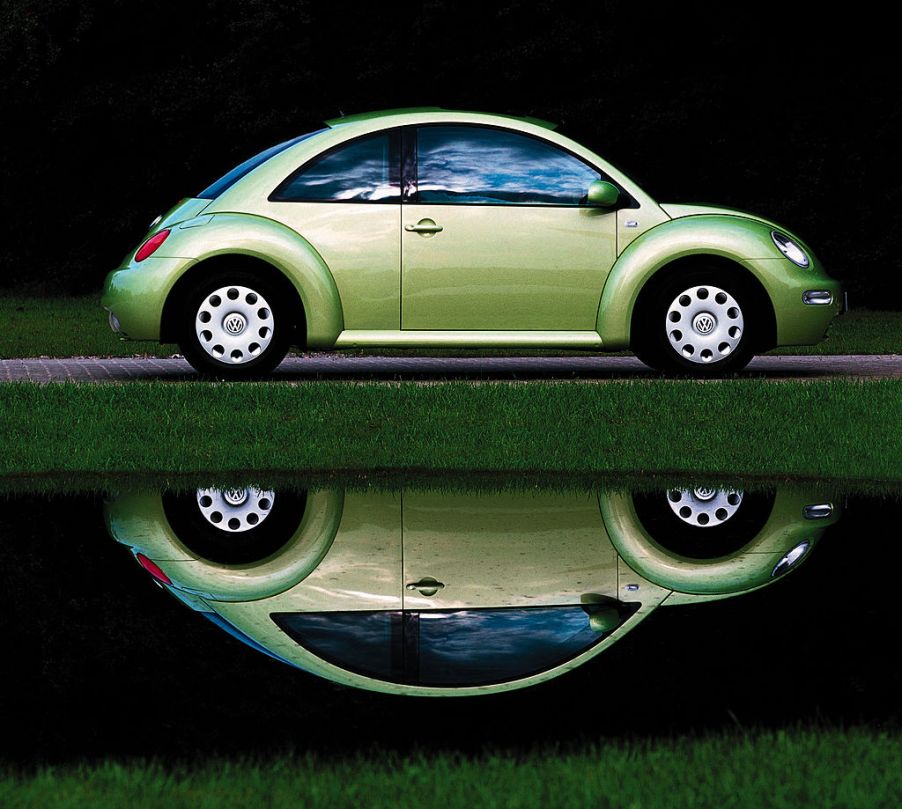
Volkswagen Produces the Very Last Beetle
The Volkswagen Beetle has been around as long as most of us have. The first VW Beetles were produced all the way back in 1938. The iconic Beetle has represented many things over eight decades. It has represented everything from a dark time in post-war Germany to the symbol of U.S. counterculture in the ’60s. The Beetle has 21.5 million total sales, five million of those in the U.S., and has been sold in a total of 91 markets.
Sadly in July 2019, the last ever VW Beetle rolled off the assembly line at a plant in Puebla, Mexico.
A people’s car
With its rounded profile, almost vertical windshield, and air-cooled rear engine, the Beetle could seat four or five people. The design came from Austrian engineer Ferdinand Porsche. Adolf Hitler commissioned him to design a “people’s car” to promote car ownership across Germany, as the Model T had in the United States.
The car bore striking resemblances to both the Czechoslovakian Tatra T97 in 1937 and the 1934 sketches of Hungarian engineer Bela Barenyl. Initially, they called the Beetle the KdF-Wagen, a Nazi labor organization acronym.
It was to be sold under the organization’s auspices, but production halted when World War II began. Military vehicles were then produced at the massive new plant in Hanover. They used forced laborers taken from all across Europe who worked in pitiful conditions.
In 1949, the Volkswagen factory was transferred to the German government and the state of Lower Saxony who still owns a part of the company. Then, it relaunched as a civilian automaker under the supervision of British occupation authorities. Officially called the Type 1, the millionth Beetle rolled off the assembly line in 1955 in a town now called Wolfsburg.
Think small
The Beetle retained its popularity for a time. Volkswagen found a strong foreign market in the U.S. Sales peaked in 1968 with 563,522 VW vehicles sold in the U.S., roughly 40% of production.
The advertisements from the Doyle Dane Bernbach agency used witty slogans like “Think small” to appeal to car buyers. In West Germany, the Beetle did well thanks to its low price, good quality, and durability. In the U.S., the Beetle was an unconventional car in a market filled with vehicles that were bigger and flashier.
When newer front-drive cars like Golf rose in popularity, production of the VW Beetle ended in Wolfsburg in 1978. Beetles were produced in Mexico from 1967 until 2003. Called the “vochito,” it became a hardy, Mexican-made “carro del pueblo.”
The new beetle
In 1998, a fully remodeled retro model, the New Beetle, brought back its original and distinctive persona. VW built the new models on a modified Golf platform.
This was under the direction of the CEO and grandson of Porsche, Ferdinand Piech. The design for the new Beetle was made sleeker in 2012. The final Beetle of 5,961 Final Edition versions went to a museum to mark the end of production for this historic vehicle.
What killed the Beetle?
Everything comes to an end. Most vehicles don’t enjoy the longevity that the VW Beetle did. But old age wasn’t what killed the Beetle. According to industry experts, it was the American desire for light trucks.
Over 70% of vehicles sold in the U.S. are built on light-truck platforms. That number has risen from 45% in 2008 during a time when oil prices rose to $140 a barrel.
Energy costs made many Americans stop and think about gas mileage for a time. Since then, many Americans have abandoned small cars with strong fuel efficiency. They crave bigger, more dynamic cars with strong engines.
Over the last 25 years, the demand for gasoline has grown an average of 1% a year. That’s on par with the number of larger cars registered in the states.
The Volkswagen plant in Puebla will produce new compact SUVs for the North American market called the Tarek. It will sit below the Tiguan in VW’s lineup.
Will it be as timelessly cool as the Beetle? Probably not.


